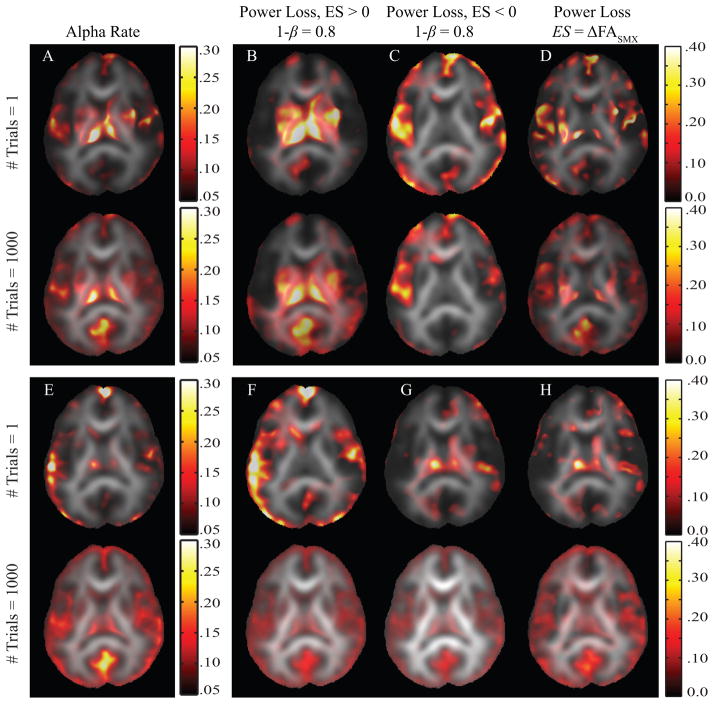Correcting Power and p-Value Calculations for Bias in Diffusion Tensor Imaging.
Carolyn B. Lauzon and Bennett A. Landman, “Correcting Power and p-Value Calculations for Bias in Diffusion Tensor Imaging.” Magnetic Resonance Imaging. 2013 Mar 2. pii: S0730-725X(13) PMC23465764 †
Abstract:
Diffusion tensor imaging (DTI) provides quantitative parametric maps sensitive to tissue microarchitecture (e.g., fractional anisotropy, FA). These maps are estimated through computational processes and subject to random distortions including variance and bias. Traditional statistical procedures commonly used for study planning (including power analyses and p-value/alpha-rate thresholds) specifically model variability, but neglect potential impacts of bias. Herein, we quantitatively investigate the impacts of bias in DTI on hypothesis test properties (power and alpha-rate) using a two-sided hypothesis testing framework. We present theoretical evaluation of bias on hypothesis test properties, evaluate the bias estimation technique SIMEX for DTI hypothesis testing using simulated data, and evaluate the impacts of bias on spatially varying power and alpha rates in an empirical study of 21 subjects. Bias is shown to inflame alpha rates, distort the power curve, and cause significant power loss even in empirical settings where the expected difference in bias between groups is zero. These adverse effects can be attenuated by properly accounting for bias in the calculation of power and p-values.